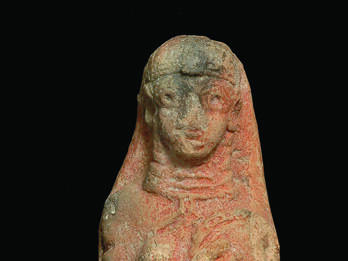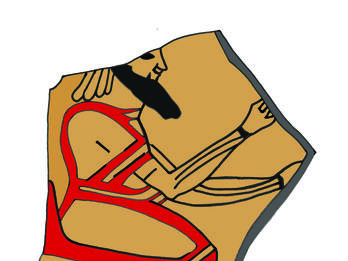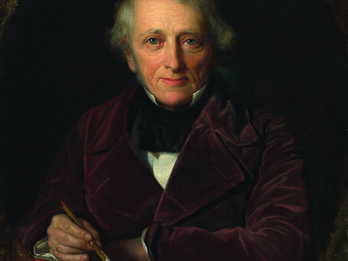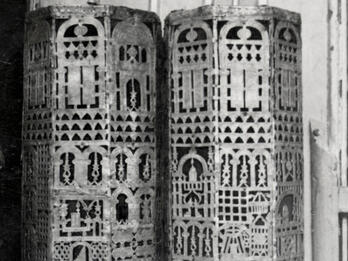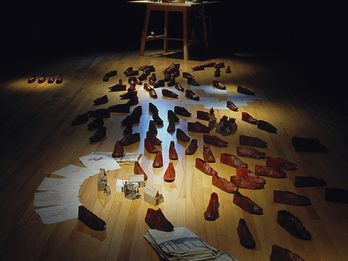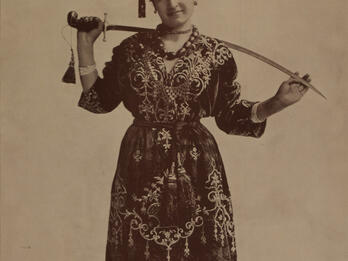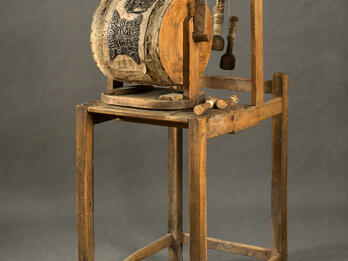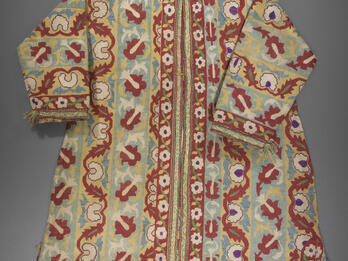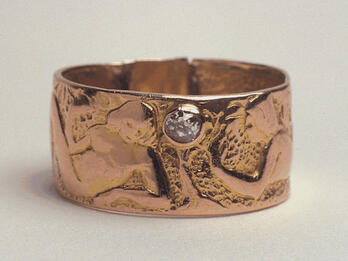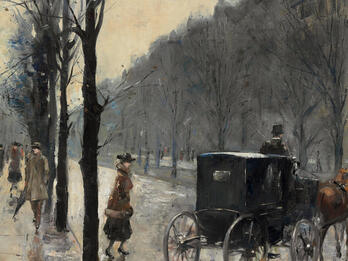Showing Results 1 - 10 of 20
Restricted
Image
There are numerous terra-cotta plaque figurines of females, some naked and others clothed, holding disks, mostly from northern Israel and Transjordan. Many come from border towns and towns whose…
Places:
Hazor, Land of Israel (Tel Hazor, Israel)
Date:
Iron Age II, 9th–8th Century BCE
Categories:
Restricted
Image
This is a modern artist’s illustration of a painting of a seated male in profile, perhaps an enthroned dignitary. The painting was made on a potsherd from Ramat Rahel. It measures around 5 × 3 inches…
Places:
Ramat Rahel, Land of Israel (Ramat Rahel, Israel)
Date:
Iron Age II, Late 8th–Early 7th Century BCE
Subjects:
Categories:
Restricted
Image
Leo Lehmann (1782–1859) was the father of the popular portrait artist Rudolf Lehmann. Here he depicts his father, a painter and printmaker (and his son’s first art teacher) at work, with the tools of…
Contributor:
Rudolf Lehmann
Places:
Ottensen, German Confederation (Ottensen, Germany)
Date:
1851
Subjects:
Categories:
Restricted
Image
The Jewish community of Syria dates back to biblical times. After 1492, the original community was augmented by refugees from Spain and Portugal. The centers of Syrian Jewish life were in the cities…
Contributor:
Unknown
Places:
Aleppo, Ottoman Empire (Aleppo, Syria)
Date:
ca. 1710
Subjects:
Categories:
Restricted
Image
Walking in Russia is a large installation that includes 103 handmade paper shoes, the shoemaker’s worktable, maps, textiles with drawings, and miniature house forms. Simon has noted, “This piece grew…
Contributor:
Vida Simon
Places:
Montreal, Canada
Date:
2005
Subjects:
Categories:
Restricted
Image
Very little is known about Rahlo Jammele, who performed so-called Moorish dances at the 1893 Chicago World’s Fair (Columbian Exposition) “Turkish Village” pavilion. Fair materials described her as “a…
Contributor:
J.J. Gibson
Places:
Chicago, United States of America
Date:
1893
Subjects:
Categories:
Restricted
Image
Shpanyer-arbet (spun work) was the name for a type of decorative gold and silver lace that adorned yarmulkes, prayer shawls, and other Jewish ritual garments in Eastern Europe. It was woven on a…
Places:
Sasow, Russian Empire (Sasiv, Ukraine)
Date:
Late 19th–Early 20th Century
Subjects:
Categories:
Restricted
Image
This linen coat with silk-thread embroidery was worn by a Jewish boy in Bukhara (today in Uzbekistan) on the occasion of his bar mitzvah celebration. Jewish economic life in Bukhara was closely tied…
Places:
Bukhara, Russian Empire (Bukhara, Uzbekistan)
Date:
Early 20th Century
Subjects:
Categories:
Restricted
Image
This repoussé gold wedding ring inlaid with a diamond represents the iconic Bezalel style: a fusion of biblical motifs, early twentieth-century European art trends such as Jugendstil, and Eastern…
Contributor:
Ze’ev Raban
Places:
Jerusalem, Ottoman Palestine (Jerusalem, Israel)
Date:
1914
Categories:
Public Access
Image
This rainy streetscape exemplifies the style and subject matter for which Lesser Ury is best known. The Kurfürstendamm is one of Berlin’s most storied boulevards, known for its very wide walking paths…
Contributor:
Lesser Ury
Places:
Berlin, Germany
Date:
1910


